Amid the soon to be decided potential Alaska-Hawaiian merger talks currently ongoing between the two carriers and Department of Justice, something is becoming clear. The implications of this deal are rippling through both the Hawaii travel and the U.S. airline industry. We are set to know the results of whether DOJ will permit this merger or not by Monday at 6 pm Hawaii time. That is unless there is another extension. It’s anyone’s guess at this point what comes next.
While the merger has sparked debate over its impact on routes between the mainland U.S. and Hawaii, which is very important, perhaps a more critical issue may be related to the future of interisland flights, which are a critical lifeline for residents and tourists alike that we tend to take for granted.
Sticking points/DOJ’s concerns?
The DOJ has extended its review period multiple times, with the latest extension pushing the deadline yet again. This continued delay suggests that there are significant concerns that need to be addressed for the government to approve the merger, which at least in part seem to surround certain markets.
Speculation is rife that the DOJ’s focus might have shifted towards, among other things, the interisland market, which could more significantly impacted by the merger than thought.
Interisland flights have been and continue constitute a huge part of Hawaiian Airlines’ operations, and also represent essential service needed for the state’s residents and visitors. These routes connect the islands of Oahu, Maui, Kauai, and Hawaii Island, facilitating not just tourism but also travel for healthcare, business, and personal reasons.
The possibility that Alaska Airlines might scale back these services post-merger is a concern that is gaining traction among industry observers.
Hawaii’s interisland flight network is akin to a highway or rail system for the islands. It provides residents with critical access to medical care, business opportunities, and family connections that could easily become out of reach.
For Hawaii visitors, these flights have been very reasonably priced since Southwest Hawaii flights started competing five years ago. And these flights represent the only practical way to explore multiple islands during a single trip, making them equally essential to the state’s tourism industry.
The fear is that post-merger, Alaska Airlines, which has no prior experience in operating a Hawaii interisland network, might not maintain the same level of commitment to these routes. This would have the potential at least to lead to reduced flight frequencies, higher prices, and ultimately, a decline in service quality.
Possible outcomes and remedies.
According to recent discussions on aviation forums, there is growing speculation that the DOJ might impose conditions on the merger, such as a commitment to maintain current seat capacities and flight frequencies on interisland routes for a certain period, possibly for up to a decade. This would ensure that Alaska Airlines does not reduce service levels, which could lead to increased pricing and diminished accessibility for Hawaii’s residents.
Could Seattle flights or other areas be concerns that DOJ is negotiating?
Moreover, some also believe that the DOJ could require Alaska to relinquish some of its control over key airports like Honolulu (HNL) and Seattle (SEA) to prevent anti-competitive behavior. To us, that appears a less likely concern than the interisland issue. But in addition, airline partnerships and alliances may be stumbling blocks needing to be resolved.
The broader impact of interisland changes: $400 round-trip airfares?
The potential reduction in interisland service by Alaska or Southwest is not just a concern for residents and local businesses; it could also have far-reaching effects on Hawaii’s tourism industry. Fewer flights and higher costs could deter tourists from visiting multiple islands, leading to a concentration of tourism. This could exacerbate the strain on infrastructure in certain areas while leaving other parts of the state feeling economically disadvantaged.
What is Alaska’s commitment to Hawaii interisland?
It isn’t known whether Alaska Airlines would have the same commitment to the interisland market as Hawaiian Airlines has had. While Hawaiian Airlines’ business model heavily relies on interisland flights, making them essential for their overall strategy, Alaska Airlines might view these routes differently.
Savvy Alaska would assess the profitability of these routes and decide whether some of them might not be worth maintaining at the current level. It isn’t known if Alaska would, in the long run, perceive the need for the very high frequency of flights on certain routes, like between Honolulu and Maui for example.
Clearly, reducing them could optimize the financial performance of the airline. It has also been questioned whether Alaska would choose to use other aircraft at its disposal in a mix to satisfy both interisland, mainland, and international flights. Alaska did say previously, however, it did not plan to eliminate the quarter-century old Hawaiian interisland 717 fleet at this time. That statement, however, does not mean, however, that Alaska might not start flying 737 aircraft to and within Hawaii in much the same way that Southwest does, using them for a mix of mainland and interisland flights.
What are Alaska’s operational priorities?
Alaska Airlines’ primary Hawaii focus has traditionally been on routes between the mainland U.S. The interisland flights in Hawaii represent a very different operational environment that Alaska is less familiar with art least in Hawaii, which has the potential to be somewhat less desirable.
Alaska might wish to prioritize its established and more lucrative markets over the Hawaii interisland market. Interisland might not significantly impact Alaska’s overall business, whereas for Hawaiian Airlines, the interisland market has been deemed mission critical for countless years.
What strategic adjustments are possible:
Industry insiders have been discussing whether Alaska Airlines would prefer to adjust the frequency and capacity of these interisland flights to better align with their greater strategic goals for Hawaii. This could involve cutting back on certain routes or reducing the number of daily flights, especially if they are currently operating at a loss or not meeting Alaska’s profitability targets.
Although there’s no doubt Alaska would maintain some level of interisland flight service, they might not desire it to be at the same intensity or frequency that Hawaiian Airlines currently provides. That could lead to the potential of fewer options and higher prices.
Regulatory concerns and legal considerations.
There exists the possibility at least that the DOJ might impose conditions on the merger to maintain the current level of service in Hawaii. However, if such conditions are not enforced as part of the acquisition of Hawaiian, then Alaska could reduce its presence in the interisland market over time.
Hawaiian Airlines’ business model is focused on Hawaii interisland flights.
While Hawaiian built its business model around serving the interisland market ubiquitously, Alaska Airlines might not see the same value in maintaining that service at the current levels. This could lead to fewer flights, reduced frequency on certain routes, and potentially higher fares. The uncertainty around how Alaska will handle these routes post-merger is being disussed as a possible major concern for regulators, Hawaii travelers and others.
While the potential Alaska-Hawaiian merger is being hailed by some as a good step for both airlines, Hawaii, and travelers, the implications for Hawaii’s interisland flight network could pose challenges.
The DOJ’s ongoing review and the conditions it may impose will be crucial in determining whether this merger will benefit or hinder Hawaii’s unique and vital interisland flight market.
Get Breaking Hawaii Travel News
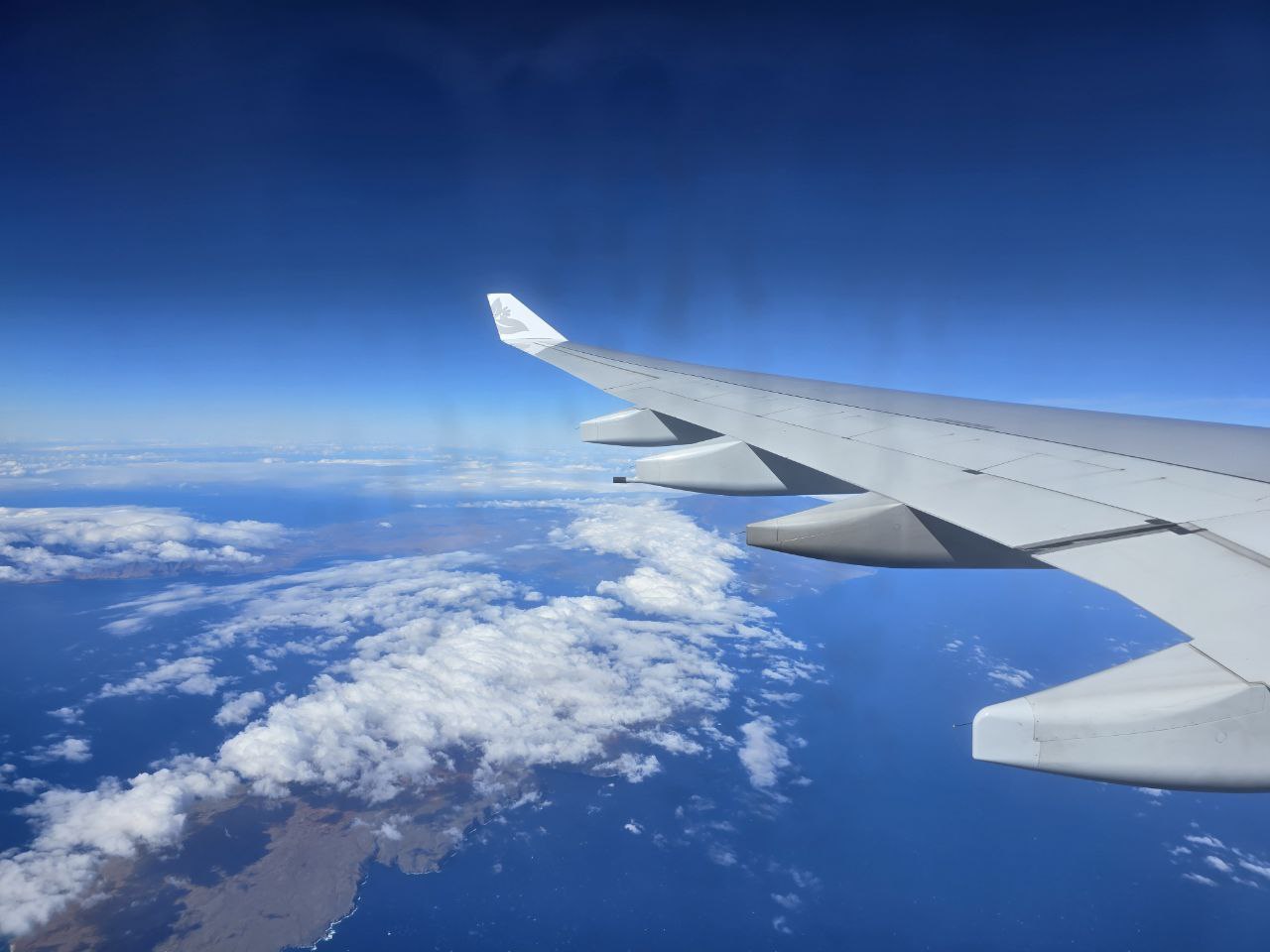
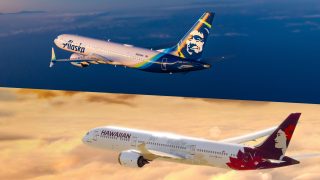
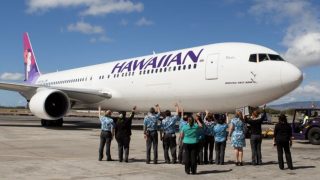
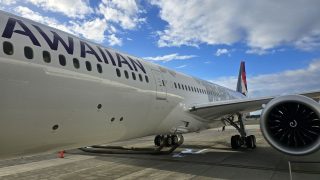
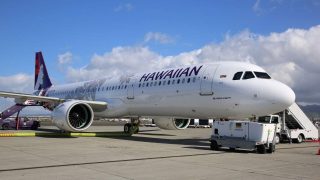
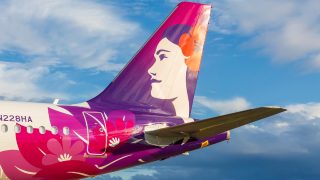
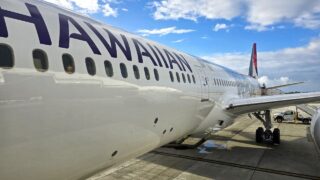
AK’s Horizon flys into many Mainland West and Alaska airports that are far smaller with far longer flights. AK will just use a combination of 737s and EMB 175s to better match load to planes during the day like they do at my home airport of RDM. SWA can’t do this as they’re all 737s. Surf boards will just have to wait for a 737, but not everyone else. With most everyone else I agree if AK doesn’t buy HA, HA goes TU. DOJ will be 100% at fault.
looks like all the speculation is moot…HNN just said the merger passed the DOJ review and now goes to the DOT, which I’m guessing is more of a formality…no mention of any conditions…look forward to to the full story tomorrow
Didn’t pass – DOJ just let the clock run out, but same result. Administration probably figured blocking it and having HA potentially crash with large loss of union jobs was a very bad look in an election year, esp. in a very blue state like HI.
Good article. Hawaii does depend on interisland flights a lot and Hawaiian provides the majority of that with Southwest providing a lot as well and both seem to lose money doing it. Alaska is very savvy when it comes to making money. Alaska provides flights to rural areas in Alaska but that is subsidized by the state of Alaska, a state that doesn’t charge income tax (another discussion). History shows interisland doesn’t support 2 major providers well, one usually dies, and then the survivor raises prices to compensate for the loss of money during the price war to survive. Hawaii the state also stands to lose its largest private employer in this deal, which would no longer be a Hawaiian company. Locals do use interisland like mainlanders use freeways, the state should subsidize locals to use it to keep prices low not expect companies to lose money. If Alaska, with no income tax, can do it, Hawaii can do it.
Clarification regarding rural air service subsidies in Alaska: The major subsidy to Alaska Air (and other airlines and bush air taxi operators in Alaska) comes from the Postal Service supporting delivery of the mail to Alaskan bush (rural) towns.
Interisland flying will be moot if the DOJ doesn’t approve the merger because Hawaiian will most likely end up with the same fate as Aloha.
Spirit is looking at the same outcome because the DOJ was “looking out for the consumer.” All of that is irrelevant if the airline goes out of business.
Framing this a little differently : if the deal is approved, AK will “buy” HI’s 737 fleet (or leases), and could use most of them to expand AK’s mainland market or as trade-ins. It would then add regional jets to the inter-island market on thinner routes. EMB would probably be happy to take them. 737’s would be used when the extra capacity is needed. AK probably doesn’t want to operate small numbers of HI’s newer long haul aircraft so they could trade them in for more of what they already have. The inter-island market will be better served and probably profitable. The question is: Is HA’s current management (and their current customers) ready to give up on HI as a long haul airline and also replace the all-737 inter-island fleet with a mix of aircraft that will be more efficient and more suited to the market? Or let HI go bankrupt? The DOJ is just in the way of letting the two airlines and their customers come to a winning solution to HI’s current problems.
HA does not have any 737’s , leased or otherwise.
HA’s current fleet consists of:
19 Boeing 717 (inter-island fleet), with 1 parked.
18 Airbus A321 for narrow-body mainland flights
29 Airbus A330 for widebody mainland and international flights (2 parked)
2 Boeing 787 aircraft for widebody mainland and eventual international flights, slowly replacing the A330 fleet.
Thanks. My mistake. AK might like them better assuming parts are available. They know the Mad Dogs well. The Airbus and BA long range A/C will be valuable.
as Drew said, HA doesn’t own any 737s. Alaska can’t get new ones to replace their old ones very quickly due to the slowdown at Boeing so they are strapped on new airplanes. EMB? The company Embraer? They sell airplanes, they don’t buy them, so not sure if you meant something else. Regional Jets, RJs, are Bombardier made, not EMB, maybe talking the EMBs flown by Horizon? That won’t happen due to union scope from both pilot groups. Already a strong subject since Alaska wholly owns Horizon. 717s are a more economical interisland airplane than the 737s. Maybe a 737-700 would be sort of close, Max- no way, Max engines are designed to save fuel at altitude over time, not up/down quick turns, their savings go away fast. You would have to do less routes with more packed planes with a 737, there is a bit of loss of convenience for folks when the routes are reduced. The 717 is very hard to beat interisland no real 1-for-1 replacement, really the A220 is the closest to the 717.
Jay. EMB builds & sells regional jets and takes trade-ins like all airframes. The A220 is state of the art in all respects and the 717 is the last of the DC-9 line. They both have 2×3 seating but that’s where the similarities end. The A220 will soon be flying to and from the mainland. It beats both of the newer HA long range offerings hands down. Both in efficiency and passenger comfort. It will be particularly good in smaller markets. The majors can kill HA ‘s mainline business any time they want to.
My dear wife recently retired as a high ranking government official. She say’s the reason for the delayed response from DOJ has little to due with questioning the merits of the merger and more to do with a dis-functional government agency who waited to the last minute to review the package.
Bingo. Richard C! Tell DOJ to go away and spend our tax dollars prosecuting people that are obviously breaking the law and lining their own pockets.
I realize that this site is primarily focused on tourism, but this is one issue where residents must take precedence, and tourists’ needs take a back seat.
Those of us on neighbor islands require inter-island flights for work, family, medical appointments, sporting events, and much more. Anything that threatens the frequency and cost of inter-island travel must be taken seriously, and the solution needs to prioritize the needs of state residents over all other considerations. Sorry tourists.
This is interesting. But you have overlooked or don’t know about the very extensive inter-Alaska flight schedules that Alaska Air Lines serves to numerous cities and towns across Alaska, even to very remote and small villages. You could take a boat or ferry between various Hawaii islands, but there is no possible connection between many Alaska villages, except flying. So, this is a type of service Alaska Air has done for many years.
Correct. An important distinction however is that the state of Alaska subsidizes Alaska airlines to do this. The state of Hawaii does not subsidize Hawaiian airlines. Interesting as one state charges income tax and one does not. I think Hawaii should have subsidized locals to use Hawaiian airlines for things like hospital visits, sporting events, and a certain amount of personal travel for family visits. Alaska pays Alaska Airlines directly to go to these locations, I think Hawaii should give vouchers to locals, but once Alaska buys Hawaii it is no longer a Hawaii company and as long as someone else is willing to do interisland (SWA) that is off the table to provide subsidies to keep it going.
Alaska Airlines adding a Sub fleet of Hawaiian Airlines painted E175 for
Inter island service replacing the 717 world be a huge win for that Hawaii.
The E175 can operate at Molakai , lanai and even possibly West Maui so I’m sure AS would restore service. Yes the E175 would reduce the available seats within the islands. But AS said they plan on using HA A321 and AS 737 to fly inter island flights during peak times similar to Southwest vs having the aircraft sit idle until the outbound L48 flight. This will be a Win Win for everyone except the HA crew since Horizon pay scale much smaller than its Main line owner.
ALPA is a very powerful Union that represents both the Hawaiian and Alaska Airlines. The Hawaiian Pilots have a scope clause in there contract that will prevent Horizon Airlines from operating in the Hawaiian Interisland market. Jet airplanes are not allowed to land in JHM airport which is west Maui airport.
Opinion P. ALPA just hasn’t seen a deal they like yet. DOJ doesn’t need to be involved. The people affected the most by the Jet restrictions can decide. Jets or drive. They will find a way to accommodate Jets.
Kind of hard to drive inter island……
Horizon on intraisland won’t happen for a couple of years if the merger goes through. The Hawaiian pilots contact doesn’t allow it. That contract will be in effect until a new joint pilots contact is passed. That is probably a couple of years away.
Not gonna happen. The Embraer will not accommodate surfboards. Cargo hold access is too small.
Dysfunctional government? Imagine that….
The e 175s currently in commuter divisions of airlines may not accommodate surfboards but the e 190s under discussion to replace the inter island flights are larger planes comparable to the 717s or smal 737s, 120 -140 seats and will accommodate surfboards. They even have capability to fly zhawaii – Mainland on thin routes. The union pilot issue is moot because the size would require these to be operated by mainline pilots just like the 717s.
What I don’t get is when HA was charging a huge amount of money to travel inter island they praised when SW entered the market. SW lowered fares and now-well now Hawaii wants to complain about SW. Not sure exactly what it is that HA has over SW. But why argue. AK isn’t going to dive into inter island flying. If they do, well everyone will start to hate on AK. Clearly it’s a no win situation in the HA market. Gaining a fleet when planes are hard to come by. Buying another airline is the way to go. AK will make a lot of promises. In the end don’t count on the same route structure as HA. When SW scales way back guess everyone can find someone else to complain. “Aloha spirt” clearly isn’t going to happen again. Aloha was it and it was let go.
First the DOJ interisland concern is valid. It is a must that interIsland flights stay the same
Example I have to go to Oahu from Maui for Medical reasons and business often.
Limited flights cannot happen.
Effects all us residents here.
Economy of Islands already threatened.
And the Airlines must remain with same names and service that would be a requirement which can be met. If Alaska does not agree? No deal.
And without a deal Hawaiian Airlines will be protected.
The goverment will protect the Airline under chaper 7 reorganization. It has happened before.
HA is the most important Airline in Hawaii to the residents of the Islands, more then tourist.
Franklin: The government doesn’t “protect” any debtor in bankruptcy court. That’s not the way it works. Chapter 7 means the airline is liquidated and ceases to exist. Chapter 11 reorganization is a possibility. And some HA employees have pointed out that the airlines has been through it twice before. Frankly, it’s pathetic if that becomes the strategy cause it’s not a promising sign for HA’s future.
But you know what’s better that filing for chapter 11? Merging with Alaska, a suitor that’s never filed for bankruptcy and has demonstrated an ability to run a financially sound operation & an ability to compete effectively with the “Big Four” airlines, particularly Delta & Southwest.
The HA board and its shareholders all agree: This merger should happen. It’s in the best interest of Hawaiian Airlines. And the Hawaiian Airlines brand can actually Survive.
What a mess – we’ve been flying Hawaiian since the mid 70’s annually and personally I’m not happy about this takeover/merger. Hawaiian’s financial issues not withstanding I have found Alaska’s service a bit wanting. They don’t have the same “Aloha” spirit. However the loss of the inter-island service or even a reduction would be terrible for both the residents and for tourists alike. The effect could be catastrophic for all the businesses that are supported by Hawaiian flights today!
It was only after retirement that I moved to the “south 48 states, or “Outside” as Alaskans say. Before that I lived in Nome, Alaska.
I remember the “bruhaha” and frustration 25 years ago when the former Alaska Airlines management floated a proposal to remove the Eskimo likeness from the horizontal stabilizer of Alaska’s planes. Alaska’s current leadership has proven its great respect for native peoples. Jim E
We had another airline which everyone had forgotten. And, Hawaiian Airlines ran them out of the market. “Aloha Airlines”
Just to clarify…HA and AQ were very competitive with each other and when the airlines were deregulated they faced an onslaught of new competition which hurt them both…HA did a better job expanding and surviving than Aloha…..the final straw was GO Airlines that entered the market with money losing fares to try and break in(sound familiar?)…they actually illegally gained access to HA and AQ’S books with a fake offer of purchase before entering the market. HA sued and won, AQ did not but should have. They ran out of money. HA did not “put them out of business”.
A lot of this is relying on very specific theories with no real value. Alaska operates many routes at a loss, I’m not gonna say much but continuing the inter-island flying is not a concern for them.
Would DOJ really let HA go into bankruptcy???
Unthinkable.
Hoping for the best…and not really prepared for the worst.
It’s not DOJ’s job to design a successful merger. That’s the two merging companies’ job. If they can’t do it, DOJ will say no and the market will decide Hawaiian Airlines’s fate.
Seems like what would be best for Hawaii is to have a local, Hawaiian airline that was profitable and sustainable. I get that Alaska would add some “economies of scale” but don’t you think Alaska is going to cut Hawaiian Airlines considerably in order to meet its investment goals? And if Alaska can fix Hawaiian, why can’t a good management team at Hawaiian also do the same. Seems like there’s enough space for Hawaiian to run independently if they were well led, supported by our local leaders, and really embraced by our local communities. Hasn’t Hawaii had enough of outsiders making promises to fix things?
Awaiting the decision with baited breath….
Hi guys- goood discussion of some Alaska-Hawaiian post merger options. For interisland service, Keep in mind that Alaska Air already operates a sigificant fleet of Embrear ERJ175 s through its subsidiary Horizon Air. And Horizon already operates a commuter-like service between a number of Alaska, Washington and Oregon cities. Supporting these Horizon operations, Alaska has established a number of crew and maintenance bases. For example, Alaska operations between Anchorage and Nome & Kotzebue are supported by its Anchorage crew and maintenance base.
Jim E
Exactly. Regional jets work. Horizon also operates turboprops and they also work. Getting the right aircraft on each route is essential. 737 Max ain’t it!
AS through it’s wholly-owned (since 1986) subsidiary Horizon Airlines retired its last turboprop, the Q400, internally referred to as the “Q” on January 26, 2023.
Currently, Horizon operates an all jet fleet of 44 Embraer 175’s, with an additional 6 on order.
I can’t understand how the DOJ driving Hawaiian into bankruptcy could possibly improve any of these worries or concerns.
And, to be clear, that is what we are talking about. Without this deal, HA is basically a corpse like Spirit is now. Another DOJ “mission accomplished”.
But (unlike Spirit) an insolvent HA leaves a local american community is distress. The DOJ would be cutting the nose to spite the face at that point, right?
DOJ isn’t the causing Hawaiian to fail! Period. Approving a bad deal only prolongs the problem. The market will decide.
A well-run regional airline operating the right aircraft will do just fine inter-island.
Hawaiian taking on the likes of SW, AA, UA and DL on mainland flights has failed.
The DOJ is not causing HA to fail. That’s totally correct.
But what I’m saying is that HA was slipping towards failure or at least medium-term insolvency all in its own and without the DOJ having anything to do with it.
ALK’s deal is to purchase HA for hard cash. (It’s not a stock swap merger.) So from HA’s perspective, ALK’s deal sort of bails it out. And if the merger isn’t a good long term combination, or if ALK over paid, that’s really all ALK’s problem.
But if the DOJ blocks the deal, the effect will be that the DOJ sort of kills HA.
Nothing could be further from the truth Jim, HA does very well on the mainland flying. High load factors and better average yields than the big four. The Japan markets slow return is what’s hurting them
Thanks JohnW. Glad to hear that. But they can be taken out of any market they compete in by any of the giants in a heartbeat. Plus they are always last in line when a problem like the geared fan issue on the A321 comes along. Does AK currently operate the A321 or 787?
Aloha Jeff and Rob,
Anything that you’ve seen in your research that Alaska could put some of the regional ERJ-175’s like their regional Horizon aircraft to do the inter island flights? They operate the ERJ-175 as well as the bringing back their retired Q400 twin props?
Hi Dave.
Yes both those and 737 have been mentioned in the interisland mix, but it is anyone’s guess.
Aloha.
Somehow the scare of reduced interisland flights is a red herring. You have to remember where “Alaska” Airlines was born. ALASKA! In Alaska for many decades its predecessor, McGee Air Services, served many small towns (villages) in Alaska. Today Alaska Airlines still flies to places in Alaska like Adak, Barrow, Bethel, Cordova, Dillingham, Fairbanks, Gustavus, Ketchikan and Yukutat. In fact Alaska Air Flights 61 and 66 are called the “Milk Run” as they serve so many small towns. I think they understand the essential nature of interisland flights. Hopefully they will bring the Alaska spirit with them to the interisland flights.
If inter-island service is reduced there might be some other business opportunities for others. Maybe the sea gliders or some other carrier that exists or yet to be created. Of course everything at this point is just speculation.
Good day~ Wow! A lot oif speculation to go thru. Main ponts I would make, 1-HA made from an island hopper to a mainland/international carrier on the backbone of the inter-island network. So not clear AS would cut that back. 2-Carriers will operate independently. 3-As ony represetns 38% of the SEA market, so not clear how thay may be asked to cut back. HNL definelty is of some concern, but you can make the argument that there is enuf competion to keep everyone honest. 4-Continuation of inter-island service just might be the issue that allows the merger to go thru. Cheers
This article contains a lot inaccuracies with regard to Alaska Airlines’ experience with local service. Alaska has operated for years local services very similar to the inter-island routes Hawaiian Airlines operates in both Washington State and the State of Alaska.
My goodness! We need to maintain Hawaiian Airlines control over inter island flights. We could maybe do with fewer flights, but we don’t want to see higher fares, that’s for sure! People on Kauai, particularly, have to go to Oahu for shopping and medical appointments. Leave well enough alone!
If Alaska were to reduce inter – island flights wouldn’t that open that market to new competitors? Would Alaska want to risk that?
Seems to me Alaska’s initial commitment to keep Hawaiian, Hawaiian covers this? The local expertise and name recognition of Hawaiian pretty much smoked an outside airline coming in and trying to break into the market (albeit at great expense) HA by far is the dominant inter island carrier and always will be if AS keeps their promise. Be foolish if they didn’t and certainly no reason why a Seattle based carrier can’t be the local Hawaii carrier just like they are in Alaska. Maybe MKK and LNY service is the issue?
Over the years, HA has forced out competing airlines for inter island service. Mostly from the mainland. Ever since, Aloha ceased, HA has had a virtual monopoly on inter Island service. They ceased operations on Molokai and Lanai, leaving residents to deal with Mokulele which continues sub par service.
Also, remember that HA (and car rental companies) got together with state govt officials to stop an inter island ferry service from operating between the islands. Hawaiian no longer cares about Hawaii residents.
Maleko, Mist people that live in Hawaii would disagree with you. Hawaiian Air is the 7000 employees that mostly live and work in Hawaii and love the islands. Those are the people you are saying “don’t care” about Hawaii. (the ferry was approved illegally by the Lingle Administration and violated environmental laws, that’s what shut it down)